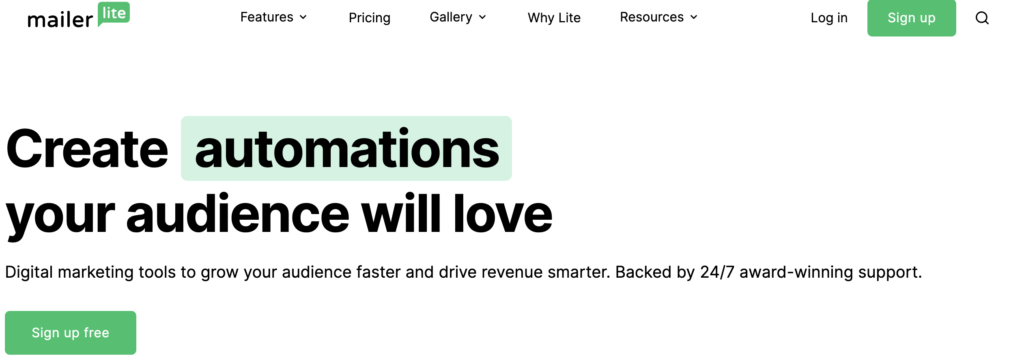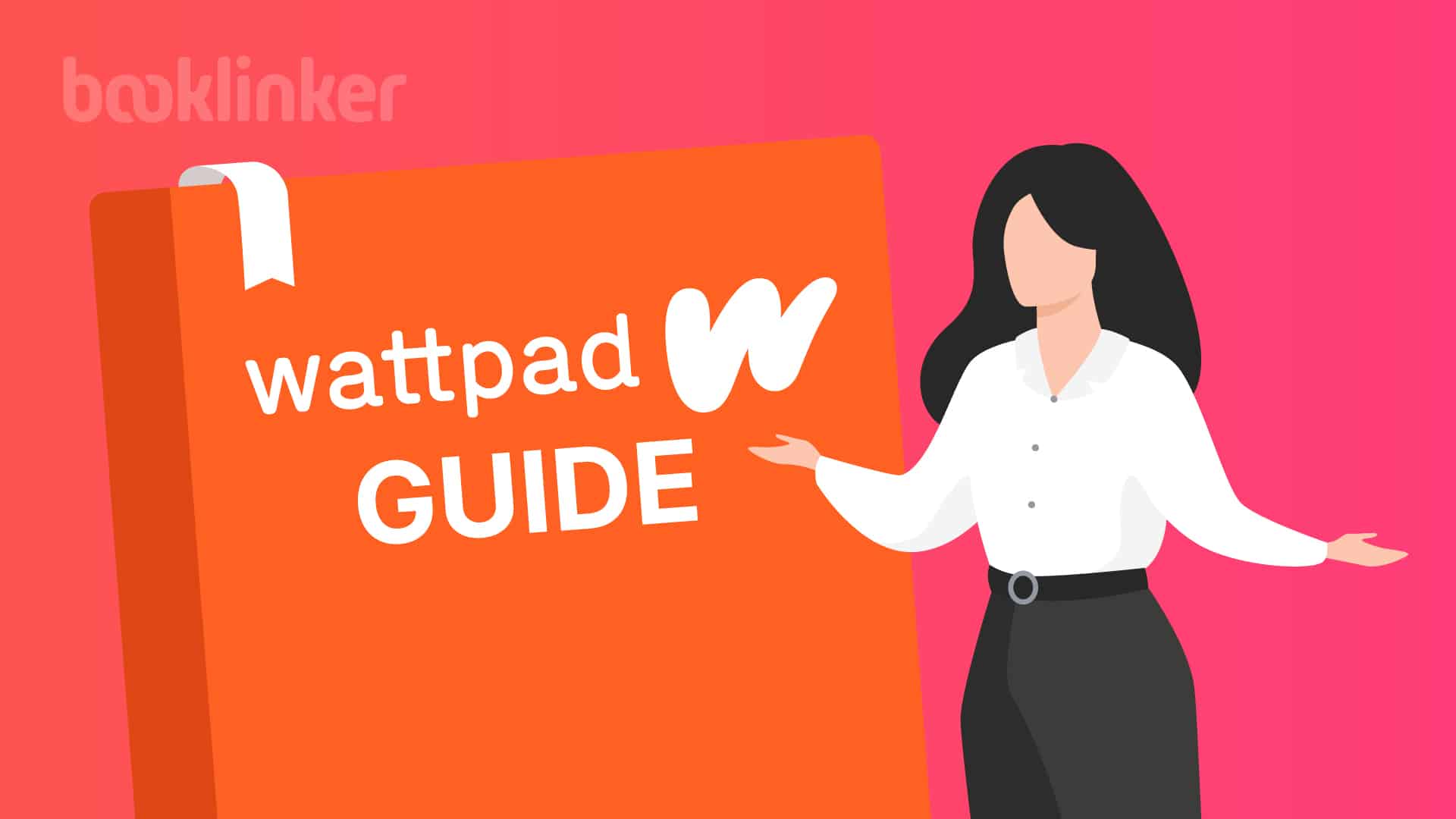
Having a solid email list of readers is a must for all authors.
It allows for communication directly with readers through a newsletter. Because readers choose to be on the list, they are more engaged. This is permission marketing at its best!
Picking the email service provider (ESP) that is right for you, is an important decision.
By understanding your needs and the pros and cons of the different email providers, you will have the information needed to make an informed decision that serves you now and in the future.

Key Takeaways
-
- Marketing Goals: Authors need clear marketing goals to tailor newsletters for specific objectives, such as book promotion or reader engagement. Well-defined goals not only guide content creation but also help assess the effectiveness of email marketing strategies.
- Budget: Authors must consider budget constraints when choosing an ESP, weighing factors like free plans for beginners against premium options for larger mailing lists. Understanding long-term budget implications ensures a cost-effective and sustainable ESP choice.
- Time: Authors should examine the time commitment required for email marketing tasks, opting for user-friendly ESPs with automation features to streamline content creation. Realistic time considerations, including ongoing engagement, help authors develop an efficient and sustainable email marketing strategy.
Depending on your needs, certain email providers are going to work better than others, which is why we compiled this list of our favorite email marketing platforms for authors.
All options on this list have free versions, allowing you to get your list up and running without paying a dime!
Before we jump into our list, here’s a quick summary of the author email providers we’ll review in this guide.
- ConvertKit (Best for Creators)
- Mailerlite (Best For Cost-Conscious Authors)
- Substack (Best For Authors Who Just Want to Write)
Table of Contents
ConvertKit

ConvertKit prides itself on being the ultimate email list provider for creators. It has tons of features, allowing you to get the most out of your book marketing efforts. In fact, it’s what Booklinker uses for our email marketing.
ConvertKit Features
Below are some of the main features of ConvertKit that are most helpful to authors.
- Landing Pages & Email Signup Forms
- Endless Integrations (Shopify, Teachable, and more!)
- Automations
- Advanced Analytics
- Massive Training Library
Using the landing page feature, you can build a website where you give away a lead magnet, such as the first few chapters of your new book, or an author workshop course you build on Teachable.
From here, using automations, you can tag the readers who claimed the freebie and send them an entirely different set of emails than the rest of the list.
This is just the tip of the iceberg when looking at the power of an email platform like ConvertKit.
Lastly, their training library makes it easy for anyone to get up and running fast, and their customer service is one of the best we’ve encountered. If you’re moving from a different email platform, they’ll even do all of the migrating work for you.
ConvertKit Pricing
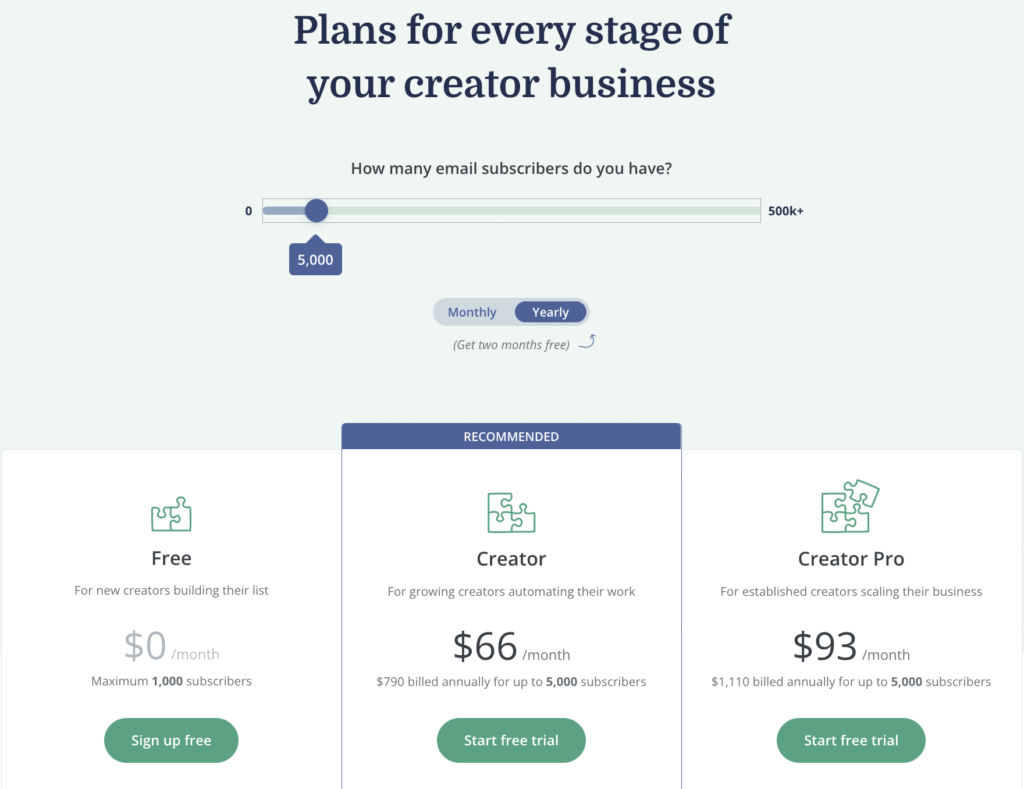
ConvertKit’s pricing depends on the number of email subscribers you have on your list, as well as your subscription plan.
They offer a “Free”, “Creator”, and “Creator Pro” plan.
Let’s take a look at an example of an author who accumulated 5,000 contacts on their list.
Yearly pricing has them paying $66/m or $93/m depending on their plan. For some authors, ConvertKit can really be overkill.
If your author business has many different aspects to it (email blasts, lead magnets, paid digital products, etc), ConvertKit is the platform for you.
If you’re just trying to send one simple monthly newsletter to your fans, it may not be the best option for you.
What we Like
- Free version
- Powerful features for creators
- Most analytics
- 99% deliverability rate
- Premade email templates
- Incredible customer support
- Strongest segmentation and tagging
What we Don’t Like
- Priciest option on the list
- Can be overwhelming with features
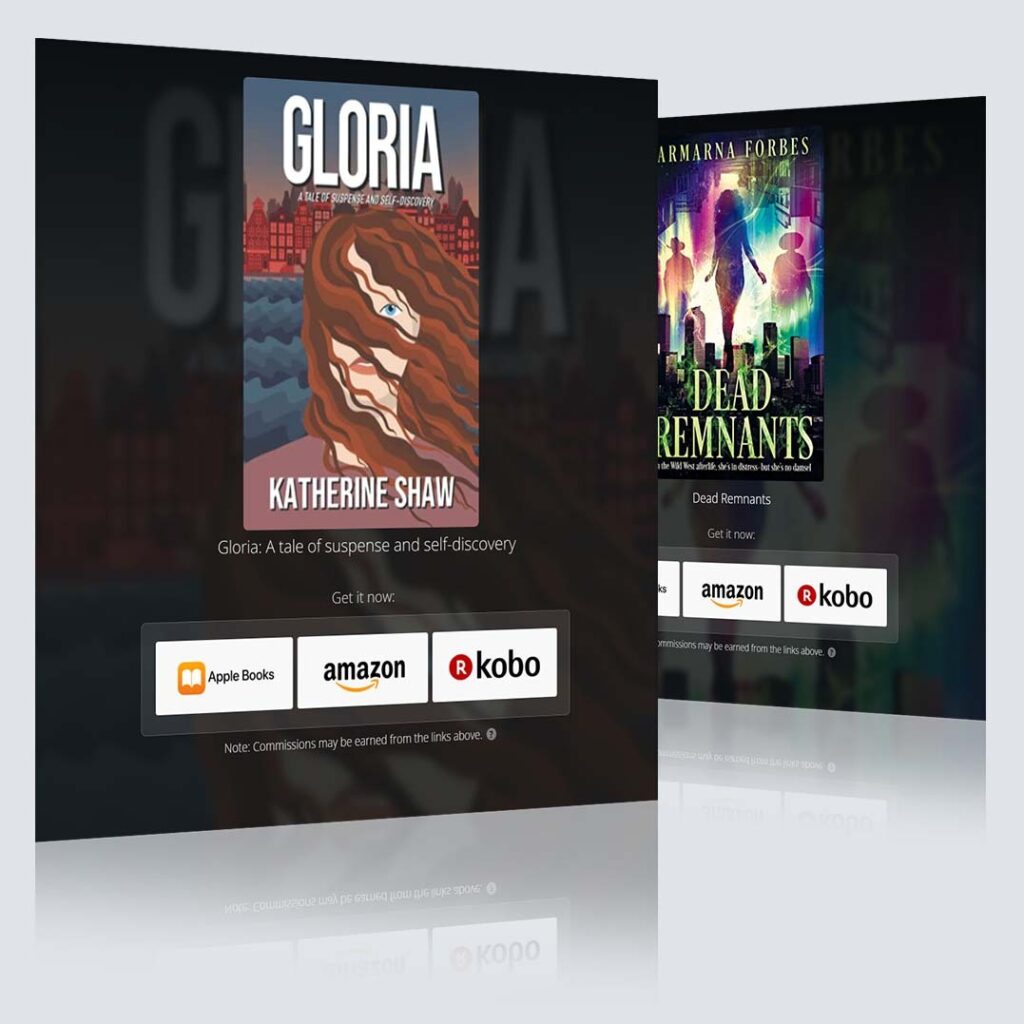
Free Universal Book Links
- Boost international sales by geotargeting readers
- Book store links update automatically based on availability
- Advanced marketing analytics
- Increase clicks with trusted links
Mailerlite is another top email marketing platform with plenty of capabilities but goes “lite” in some areas, giving you some cost savings.
Upon signup, Mailerlite will have a review process where they will make sure that the content you’re sending is within their Terms of Service. It’s the only email platform we’ve encountered that does this. It shouldn’t take more than a day to get accepted.
Let’s take a look at some of the features Mailerlite has to offer.
Mailerlite Features
Mailerlite has similar features to ConvertKit for the most part. These include but are not limited to:
There’s a lot of overlap when it comes to Mailerlite’s features and ConverKit’s. The main distinction between Mailerlite’s features and Converkit’s is that Mailerlite uses drag-and-drop WYSIWYG builder making it easy to use, whereas ConvertKit does not.
Mailerlite Pricing
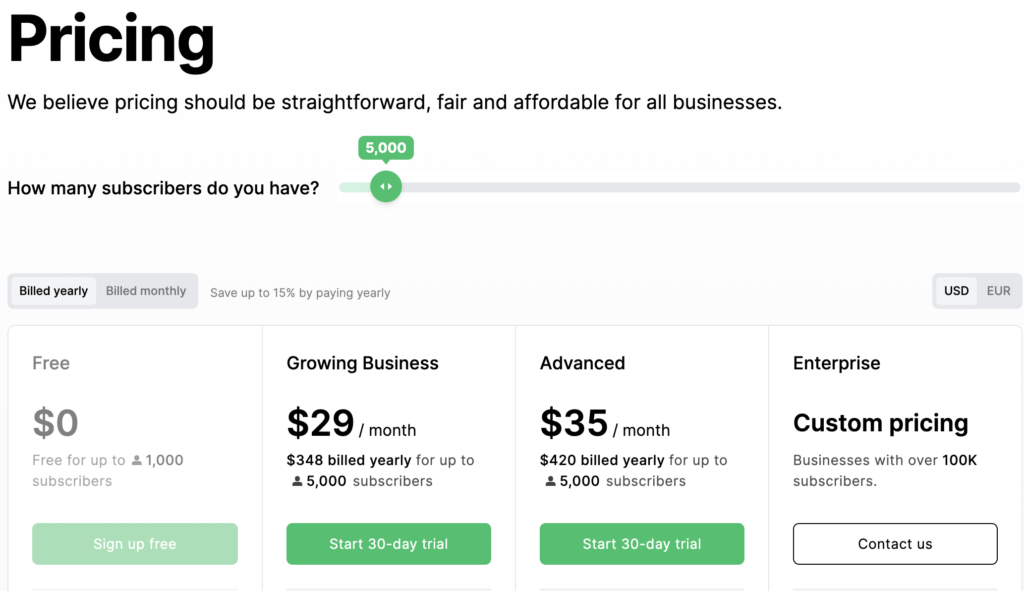
MailerLite’s pricing is similar to ConvertKits in the sense that the first 1,000 contacts on the Free Plan are free, but afterward, you have to choose between the “Growing Business” or “Advanced” plan.
An author with 5,000 fans on the growing business plan would pay $29/m, which is more than 50% cheaper than ConvertKit.
What We Like
- Extremely affordable and fair pricing
- Free version
- Great deliverability
- Decent user interface
- Premade email templates
What we Don’t Like
- Less analytics than ConvertKit
- Customer support isn’t the best
- Review process
Substack

Substack’s main goal is to give creators everything they need to start sending content. It’s basically a blogging platform with built-in email functionality.
For authors that just want to write and blast content to their list, Substack could be the best option.
Let’s take a look at what Substack does differently.
Substack Features
As we stated above, Substack is a blogging and email marketing hybrid. At the URL provided, all of your email newsletters will appear as blog content, with readers having the ability to opt-in to your newsletter to stay up to date when future content comes out.
- Automatic blog setup + custom URLs
- Landing page generation
- Native podcasting
- Basic analytics
When it comes to analytics, Substack is pretty minimal in this department. It will give you some charts on subscriber growth and basic engagement statistics.
Substack Pricing
Substack’s platform is always free, although if you setup a paywall for your readers on the platform, Substack will take 10% of the payments processed. Most authors don’t use paywalls with their lists, so this shouldn’t be much of a factor.
What we Like
- Free version
- Great for those that aren’t tech-savvy
- Super simple to get started
- Really nice UI
- Simple Stripe integration (payment processing)
- Ability to add custom URL
What we Don’t Like
- Takes 10% of payments processed
- Poor SEO
- Don’t own your content
- Little customization allowed
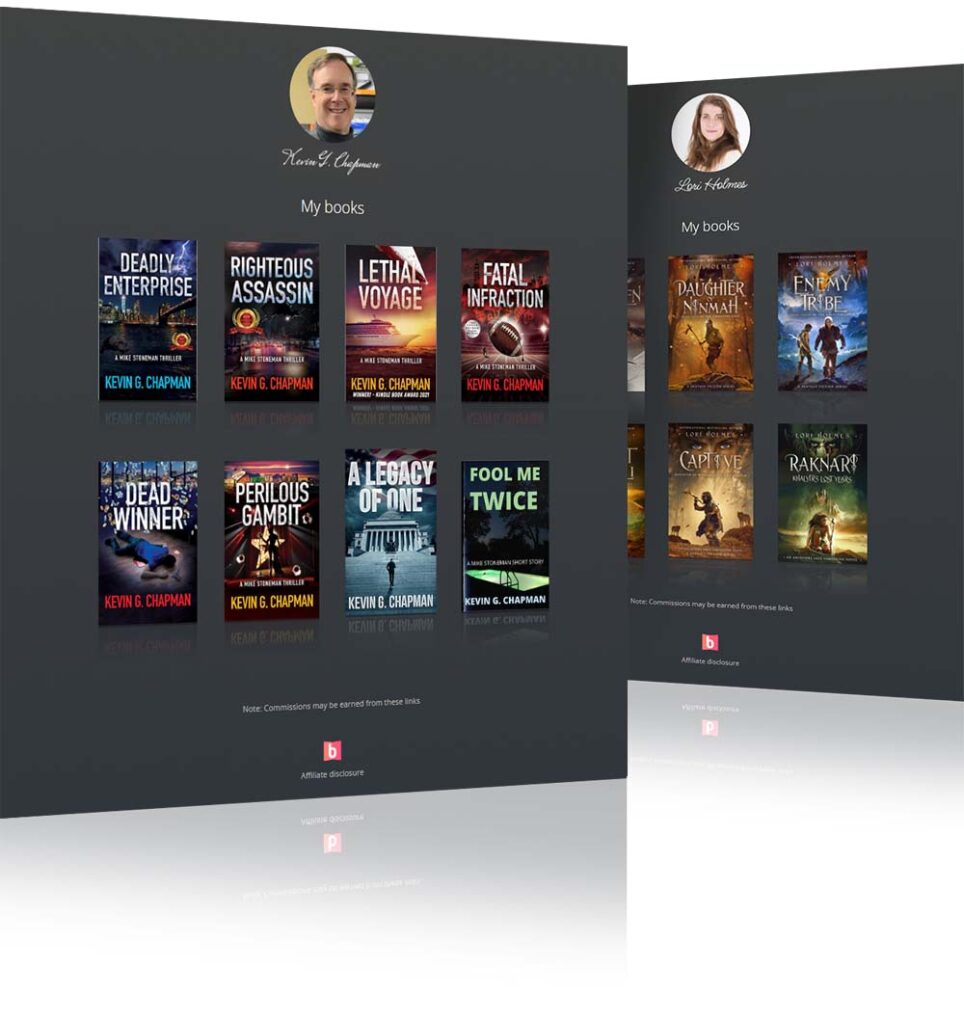
Introducing:
Booklinker Collections
One landing page for all your books. 100% free.
One link for easy sharing of your books across your backmatter, websites, emails, and social media.
Conclusion
Overall, no matter what email marketing solution you choose, they will all allow you to market your books and connect with your audience.
Sending consistent, high-value emails will be the key to success.
In order to identify which email marketing provider to go with, it’s important to first pick what features you’re actually going to use.
It’s completely fine to grow into a platform over time. After reading this guide, you should now be armed with the knowledge needed to pick an email marketing platform. If you need any help choosing, feel free to leave a comment.
If you’re still not sure how to use these platforms optimally, stay tuned for a guide on author email marketing strategy.
Lastly, if there are any options that you think we missed, let us know.

